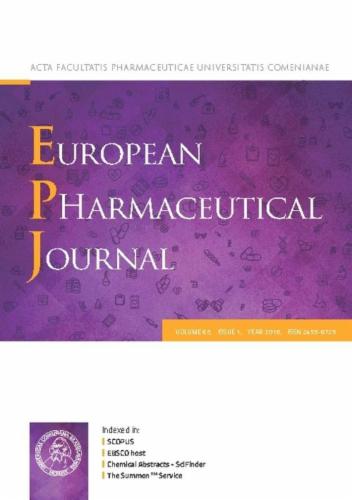鹅去氧胆酸原料药中未知杂质鉴定与定量的挑战。
IF 4.3
3区 医学
Q1 PHARMACOLOGY & PHARMACY
引用次数: 0
摘要
2018年,阿姆斯特丹UMC决定为遗传代谢性疾病脑肌腱黄瘤病(CTX)患者制备鹅去氧胆酸(CDCA)胶囊(也称为复方药物),当时该产品已获得上市许可,无法在商业上用于患者。然而,在重新分析后,使用薄层色谱法从欧洲药典(Ph.Eur.)专著中鉴定出CDCA活性药物成分(API)中的未知杂质。因此API不符合Ph.Eur标准。有关物质的规格。因此,停止了药物配制,并开始调查以确定和量化未知杂质。与此同时,第二个CDCA API来自另一家制造商。然而,该原料药似乎也含有未知杂质。用反相液相色谱-质谱法鉴定该杂质为CDCA二聚体。自从获得博士学位以来。由于当时没有描述一种合适的分析方法来定量这种新杂质,因此开发了高压液相色谱差示折射仪(HPLC-RI)方法来定量二聚体。随后,在2019年,新版本的CDCA Ph.Eur。发表了专著,包括二聚体作为额外的杂质,并使用HPLC-RI方法进行鉴定和定量。CDCA二聚体被归类为无毒,在CDCA API中允许最多0.5%的含量。因为API符合更新后的Ph.Eur。可恢复CDCA胶囊的配药。本文章由计算机程序翻译,如有差异,请以英文原文为准。

Challenges in the identification and quantification of an unknown impurity in chenodeoxycholic acid drug substance
In 2018 the Amsterdam University Medical Centre decided to prepare chenodeoxycholic acid (CDCA) capsules (also known as pharmacy compounding) for patients with the genetic metabolic disease cerebrotendinous xanthomatosis (CTX) when the product with a marketing authorization was commercially unavailable for patients. However, after reanalysis, unknown impurities were identified in the CDCA active pharmaceutical ingredient (API) using thin-layer chromatography from the European Pharmacopoeia (Ph.Eur.) monograph. Therefore, the API did not comply with the Ph.Eur. specifications for related substances and as a result, pharmacy compounding was halted and an investigation was initiated to identify and quantify the unknown impurities. Meanwhile, a second CDCA API was sourced from another manufacturer. However, this API also appeared to contain an unknown impurity. This impurity could be identified as a dimer of CDCA using reversed phase liquid chromatography mass spectrometry. Since the Ph.Eur. at the time did not describe a suitable analytical method for the quantification of this new impurity, a high pressure liquid chromatography with differential refractometer (HPLC-RI) method was developed to quantify the dimer. Subsequently, in 2019, a new draft version of the CDCA Ph.Eur. monograph was published, including the dimer as a new impurity together with a HPLC-RI method for its identification and quantification. The CDCA-dimer is classified as non-toxic and permitted in the CDCA API up to a maximum of 0.5 %. Because the API complied with the updated Ph.Eur. specifications, pharmacy compounding of CDCA capsules could be resumed.
求助全文
通过发布文献求助,成功后即可免费获取论文全文。
去求助
来源期刊
CiteScore
9.60
自引率
2.20%
发文量
248
审稿时长
50 days
期刊介绍:
The journal publishes research articles, review articles and scientific commentaries on all aspects of the pharmaceutical sciences with emphasis on conceptual novelty and scientific quality. The Editors welcome articles in this multidisciplinary field, with a focus on topics relevant for drug discovery and development.
More specifically, the Journal publishes reports on medicinal chemistry, pharmacology, drug absorption and metabolism, pharmacokinetics and pharmacodynamics, pharmaceutical and biomedical analysis, drug delivery (including gene delivery), drug targeting, pharmaceutical technology, pharmaceutical biotechnology and clinical drug evaluation. The journal will typically not give priority to manuscripts focusing primarily on organic synthesis, natural products, adaptation of analytical approaches, or discussions pertaining to drug policy making.
Scientific commentaries and review articles are generally by invitation only or by consent of the Editors. Proceedings of scientific meetings may be published as special issues or supplements to the Journal.

 求助内容:
求助内容: 应助结果提醒方式:
应助结果提醒方式:


